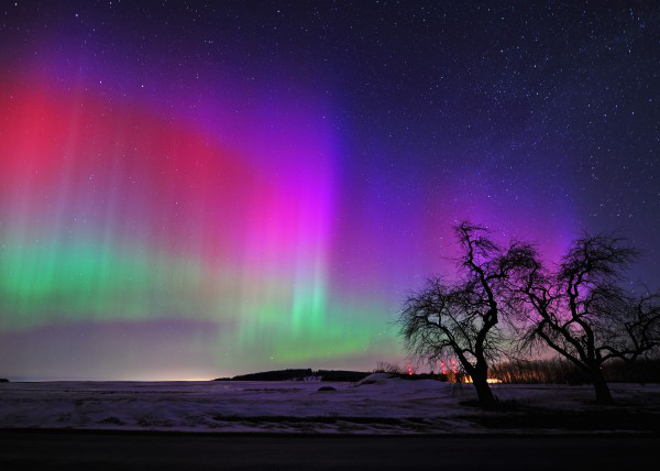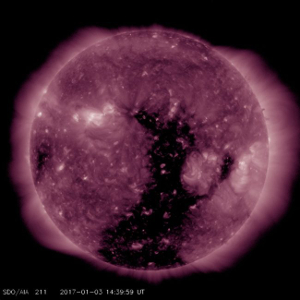|
Coronal hole could result in spectacular light
show |
|
January 4, 2017 |
 |
Thanks to a huge coronal hole over the sun which
is facing directly at Earth, there's a good
chance of geomagnetic storms over the earth's
north pole, which could be a boon to those who
wander out tonight and tomorrow night and look
at the northern sky; odds are good that you'll
see one of nature's most spectacular light
shows; the aurora borealis, or northern lights.
 |
| Photo by Karl
Battams |
| Huge coronal
hole on the Earth-facing side of the
sun, January 3, 2017. |
NASA predicts the odds of a geomagnetic storm
January 4-5 at 65-percent, and thanks to the
coronal hole, the aurora borealis show can be
seen much farther south than is usual, and North
Idaho is well within the expected viewing area.
In fact, the shimmering, colorful lights may
well be seen by viewers as far south as Colorado
and Kansas.
On a good note for viewers in North Idaho, skies
tonight through tomorrow night are expected to
be mostly clear. While there is no way to
predict the optimum time to see the northern
lights, experienced watchers say 9:30 p.m. to 1
a.m. is typically best.
The coronal hole is an area over the sun where
the sun's magnetic field has peeled back,
allowing solar wind to escape.
As that solar wind buffets the Earth's magnetic
field, the dancing lights known as aurora
borealis flicker in the Earth's northern night
sky.
Because of the hole, NASA's Space Weather
Prediction Center is calling for auroras at 60
degrees north, well south of where aurorae
normally occur. |
|
Questions or comments about this
article?
Click here to e-mail! |
|
|
|
|

